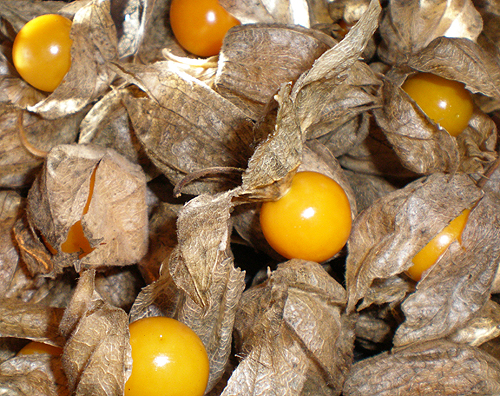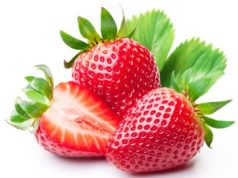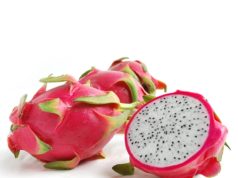Cape gooseberry (family: Solanaceae) is grouped under small fruits which include highly commercial world crops like grapes, strawberries, raspberries, blackberries, blueberries, dewberries and currants.
The genus Physalis having approximately 80 species. However, only four species are well known for the economic value i.e. Physalis pubescens L. (strawberry tomato), Physalis peruviana L. (cape gooseberry), Physalis ixocarpa Brot. (Husk tomatillo), Physalis alkelengi L. (chinese lantern).
It is cultivated as a minor crop in various parts of the world. In India, it is grown as a commercial crop as well as in the kitchen gardens and mostly grown in Uttar Pradesh, West Bengal, M.P. and Punjab. It also performs well in Jammu province of J&K state as some initial work has been conducted in S.A.U., SKUAST-Jammu with remarkable results.
Despite of the fact that this fruit crop has great potential in respect of production and market acceptability yet this crop have never been exploited for inclusion in the main stream of cultivated fruit crops and falls in the group of minor under exploited fruit crops.
Its plant: Cape gooseberry is a quick growing herbaceous crop. In India, it grows as annual in the plains of northern regions but grows as a perennial in the hills of southern regions. Normally, the plant attains 3 feet height and is highly branched.
[indeed-social-locker sm_list=’fb,tw,go1′ sm_template=’ism_template_1′ sm_list_align=’horizontal’ sm_display_counts=’false’ sm_display_full_name=’true’ locker_template=2 sm_d_text='<h2>This premium content is locked</h2><p>Share This Page To Unlock The Content!</p>’ ism_overlock=’default’ ]
The leaves are thicker, less regularly toothed, more pointed, heart shaped at the base and very pubescent or fuzzy. Inflorescence is solitary axillary and a flower appears at every node. Flowers are 1.2 to 1.5 cm long, open, bell shaped and yellow in colour.
The fruit is a berry, globose, smooth, glossy, yellow-orange in colour containing juicy pulp with numerous very small seeds. The fruit is covered by bladder like structure of persistent calyx called husk.
Nutritive value and Composition: The fruit contain 1.8 per cent protein, 0.2 per cent fat and 11.5 per cent carbohydrates. It also contain 10 mg of calcium, 60 mg of phosphorus and 18 mg of iron per 100 g of fruit and 2380 I.U. of vitamin A and 50 mg of vitamin C. due to its high pectin content it can be used for table purpose and preparation of jam and jelly which has an export value.
The seeds are also good source of flavour less oil. Fruit of cape gooseberry contains about 13.0 per cent TSS, 6.0 per cent reducing sugars, 8.6 per cent total sugars and 1.52 per cent total acidity.
Its cultivation
Soil and climate: This fruit crop has wide adaptability for soil and climate requirements. Cape gooseberry is basically a warm season crop and requires a relatively long season to produce profitable yields.
It is a tender crop and does not withstand a hard freeze. High humidity with high temperature favour the development of foliage diseases. On the other hand, hot drying winds often results in the dropping of blossoms. High and low temperature have been shown to exert a marked effect on market quality.
It can be grown on soils from the sand to heavy clays. To get the higher yields, where the growing season is too short, cultivation on heavy soils is recommended.
However, loams, clay loams and silt loams are preferred over the lighter soils for long growing season. Furthermore, a well drained soil is essential for high production.
Cultivar: In India, there is no well defined cultivar of cape gooseberry for cultivation. The local strains/races depending upon the locality are being grown, e.g. Aligarh, Agra, Allahabad, Farukhabad, Gorakhpur, Kanpur, Lucknow and Muzaffarpur.
Propagation: Cape gooseberry is commonly propagated through seeds. Vegetative propagation through cuttings or layering has also been practiced to overcome the variability generated through seed raised plants and to get true to type plants but sexual reproduction remains the method of propagation by and large.
Seeds are sown in well prepared and raised seed beds in mid of June under north Indian conditions and transplanting is done after about one month of sowing (when the seedlings attain the height of 20 cm) during rainy season. Under north Indian conditions a spacing distance of 50 to 100 cm is recommended.
Harvesting: Fruits are ready to harvest when the calyx has changed their colour from green to golden brown. Most fruits hang on the plant for several weeks without deterioration although some will fall and these must be gathered before the damp conditions at the soil surface which encouraged rot to set in.
Berries are picked over a number of times, while under north Indian conditions; it comes in one flush only and are harvested from February to April.
SUMMARY
Diversification in Horticulture is the need of the day particularly for farmers having small land holding like Jammu province for which cape gooseberry can be a very good option as this crop has low lag period, ripens within few months of planting and can be used as an intercrop in orchards due to its small stature and bushy habit.
Thus, it becomes imperative to introduce this fruit in different parts of the country where the agro-climatic conditions seems to be suitable for its cultivation.
[/indeed-social-locker]








